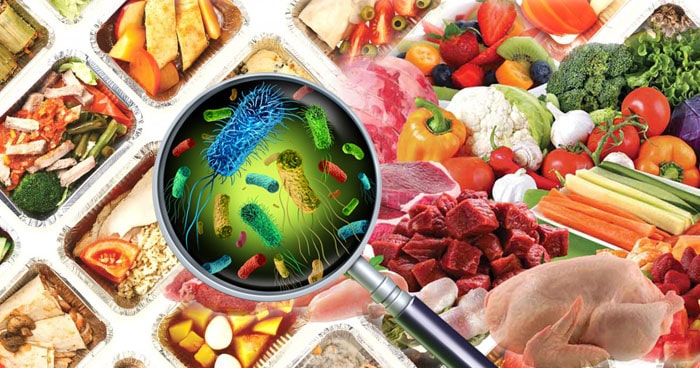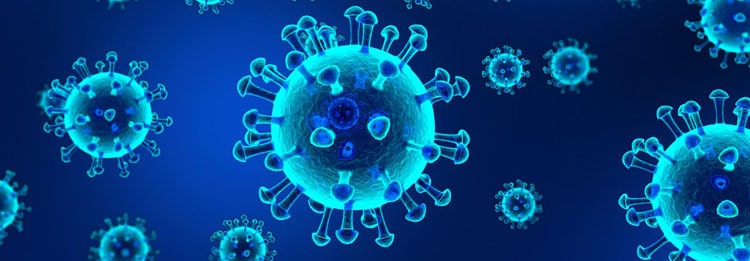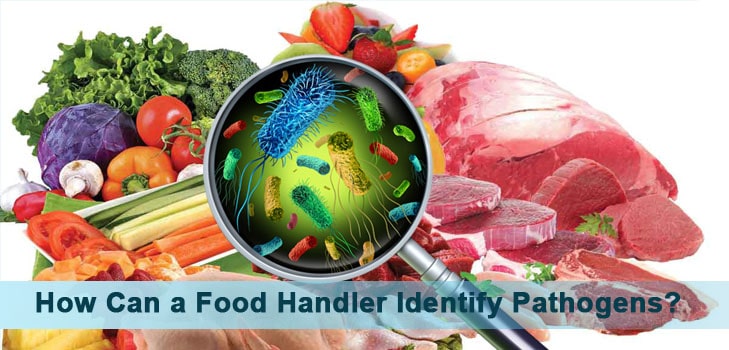Millions of people suffer from hazardous foodborne diseases every year. Some cases are so severe that lead people to death. But preventing food contamination is not hard at all!
In order to live a healthy lifestyle, we need to have adequate knowledge about food safety. But to do that, we need to learn about safety measurements and identify pathogens to eliminate them.
So, how can a food handler identify pathogens? And how do you prevent that?
To get answers to these questions, follow this article till the end to get some radical information.
Can pathogens in food be detected?
Pathogens in food can be detected obviously. There are some red flags that will help you to identify bacterial growth in your food. You can identify it by the texture, color, and condition of your food.
But there are some bacteria such as E. coli that you can’t detect on your food. It is a dangerous contaminant that can cause some serious health issues.
For this reason, you need to know about how to prevent contamination besides identifying the presence of harmful pathogens in your ration.
Video: Food Pathogen detected
What are the common food sources of the pathogen?

Every food we eat contains bacteria more or less, and we have to lower that risk by maintaining proper hygiene standards. However, some food items act as a perfect breeding ground for pathogens.
Some of the most common food sources of the pathogens are:
- Raw meat
- Raw fish
- Unpasteurized milk
- Cheeses
- Seafood
- Sprouts
- Vegetables
- Fruits
- Rice
- Raw flour
- Shellfish
- Raw and undercooked eggs
- Leafy greens
Raw food items like meat and fishes are the most favorite breeding ground of germs. Though raw vegetables and fruits are not that vulnerable to pathogen infestation, we need to wash and store them properly to prevent contamination.
Unpasteurized milk and dairy products are bacteria-friendly products. And so, people with a weak immune system should avoid these food items.
Cooked foods are safer than uncooked ones. So it would be wise to cook them at the recommended temperature to avoid nasty foodborne illness.
Which symptom must be a food handler report to the person in charge?
Food handlers must report to the person in charge if he has any foodborne diseases or injury. If they keep working while being sick, they have the chances to contaminate other people. And this should be avoided at any cost.
Things to do while suffering from foodborne sickness
If the handler is suffering from foodborne diseases like vomiting, diarrhea, and nausea, they should immediately stop working and report their condition to the supervisor.
But if they are feeling nauseous for other obvious reasons like pregnancy or motion sickness, they don’t run for their life immediately.
After having the symptoms of foodborne illness, the handler should get medically tested to identify the reason behind it. Moreover, they should inform their supervisor about the areas they might have contaminated to prevent any further sickness.
The handler shouldn’t go to work with that condition and wait till they get better and work in a safe environment.
Things to do while suffering from injuries
If the food handler is suffering from any kind of injury or infection, they should inform their supervisor about it. Sometimes these kinds of injuries tend to ooze, which can cause bacterial contamination too.
When this kind of situation occurs, the handler needs to cover the injured area with a generous amount of bandages to keep the area secure.
Or they can use some water-proof covering for better safety measures.
So, if the food handler is suffering from any discomfort that may have occurred because of food contamination, they should inform the person in charge instantly. In this way, further contamination can be prevented.
What is the best way to rid of pathogenic contamination?
You can effectively get rid of pathogenic contamination by following these four simple steps. They are:
- Cleaning
- Separate
- Cook
- Chill
Cleaning:
- Wash your hands with warm water and soap
- Keep your kitchen clean.
- Wash your dishcloth daily
- Clean your utensils every time you use them
- Clean your worktops with hot water or antibacterial solution
- Wash your raw fruits and vegetables
- Clean your poultry and fish properly.
- Keep your refrigerator clean.
Separate:
- Keep your poultry and veggies separately while shopping.
- Use different utensils to keep them.
- Cut fish, meat, vegetables, fruit with different knives
- Put them separately on the fridge.
- Avoid any type of cross-contamination.
Cook:
- Cook your food at the perfect temperature recommended for that.
- Avoid eating raw seafood and other items if you have a weak immune system.
- Use a kitchen thermometer to check the proper temperature.
- Don’t leave your cooked food openly out there for too long.
- Store your cooked food on sealed containers on the fridge
Chill:
- Refrigerate your food items immediately after cutting them
- Put the poultry items on the bottom shelf of the fridge.
- Keep the temperature within 40 degrees Fahrenheit.
- Don’t thaw frozen food on the kitchen counters.
- Check the expiry dates of the stored foods.
If you follow these simple rules, you will not be vulnerable to pathogenic contamination ever again, trust me!
How can you detect pathogens?
There are some ways that can help you to understand if your food is contaminated or not. Let me tell you all about those red flags now.
The ways of detecting pathogens in food:
- Contaminated foods usually have a slimy film.
- There will be some visible molds
- Discoloration of the flesh
- Foul and pungent odors coming out of them
- Unusual texture and shape
- Seafood smells like fish.
Moreover, it would help if you didn’t keep cooked rice on the fridge for more than six days to avoid foodborne diseases. And if any food items still look good after passing the expiry dates, throw them right away!
Final Verdict
So, are you still wondering how can a food handler identify pathogens? Well, I hope this article has put an end to your queries for now!
But as I revealed before, detecting bacteria on your food is not the only way to keep your food safe. You need to take proper safety measures to avoid food contamination and enjoy sound health.
Hopefully, now you can do it efficiently to maintain a satisfying life.
We talk about more food
Which Statement best Describes a Lifestyle with Healthy Eating Habits?, Food Contamination Caused by Pathogens can be Controlled by , What is The Best Way to Prevent Poor Food Safety , What Food Does not Support Bacterial Growth , How do you identify a pathogen in Food?, What bacteria can survive boiling water

